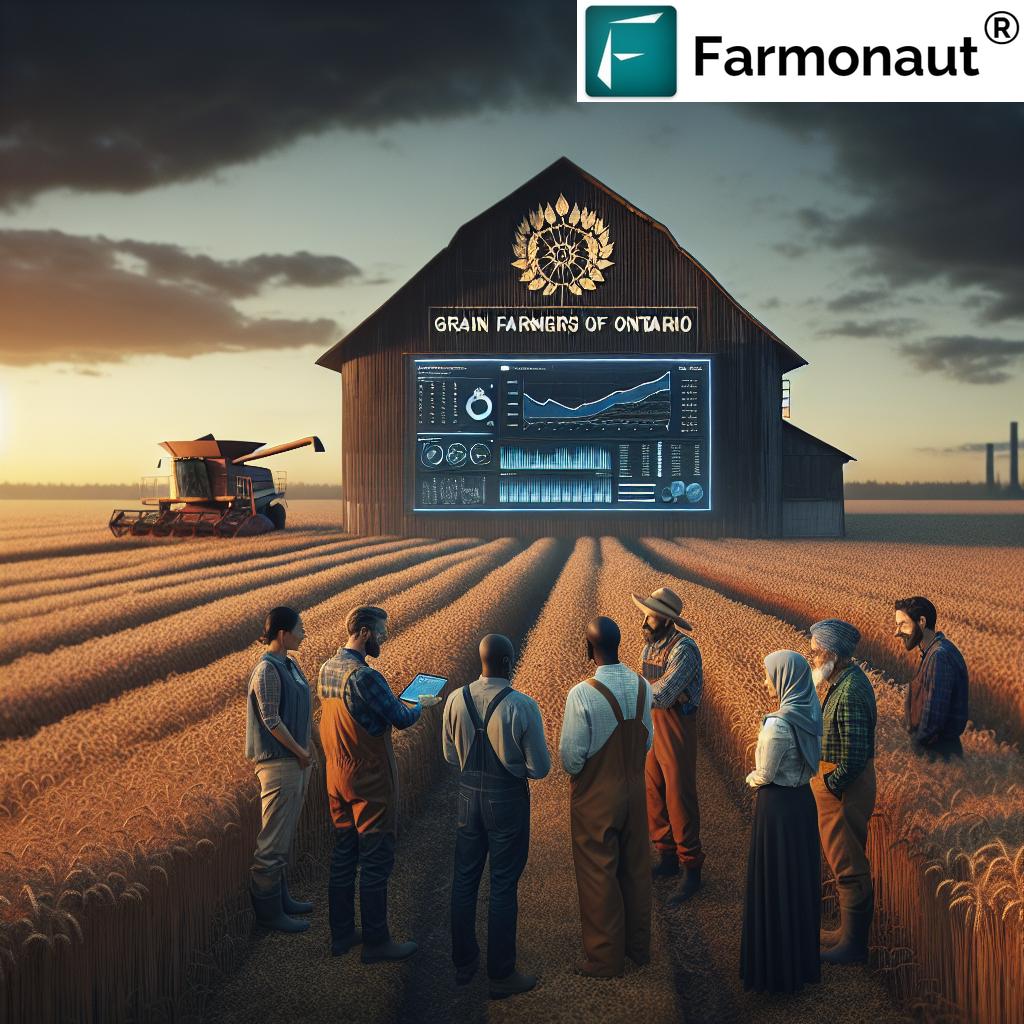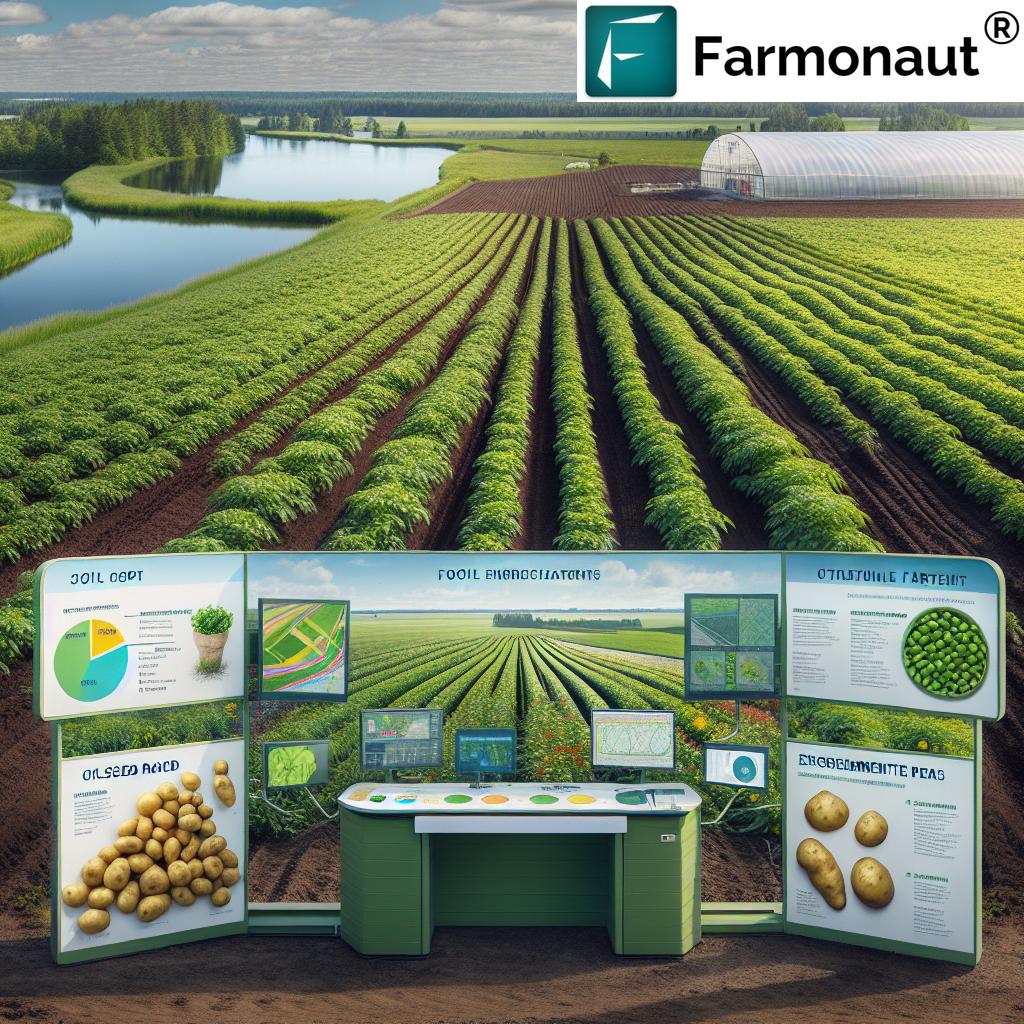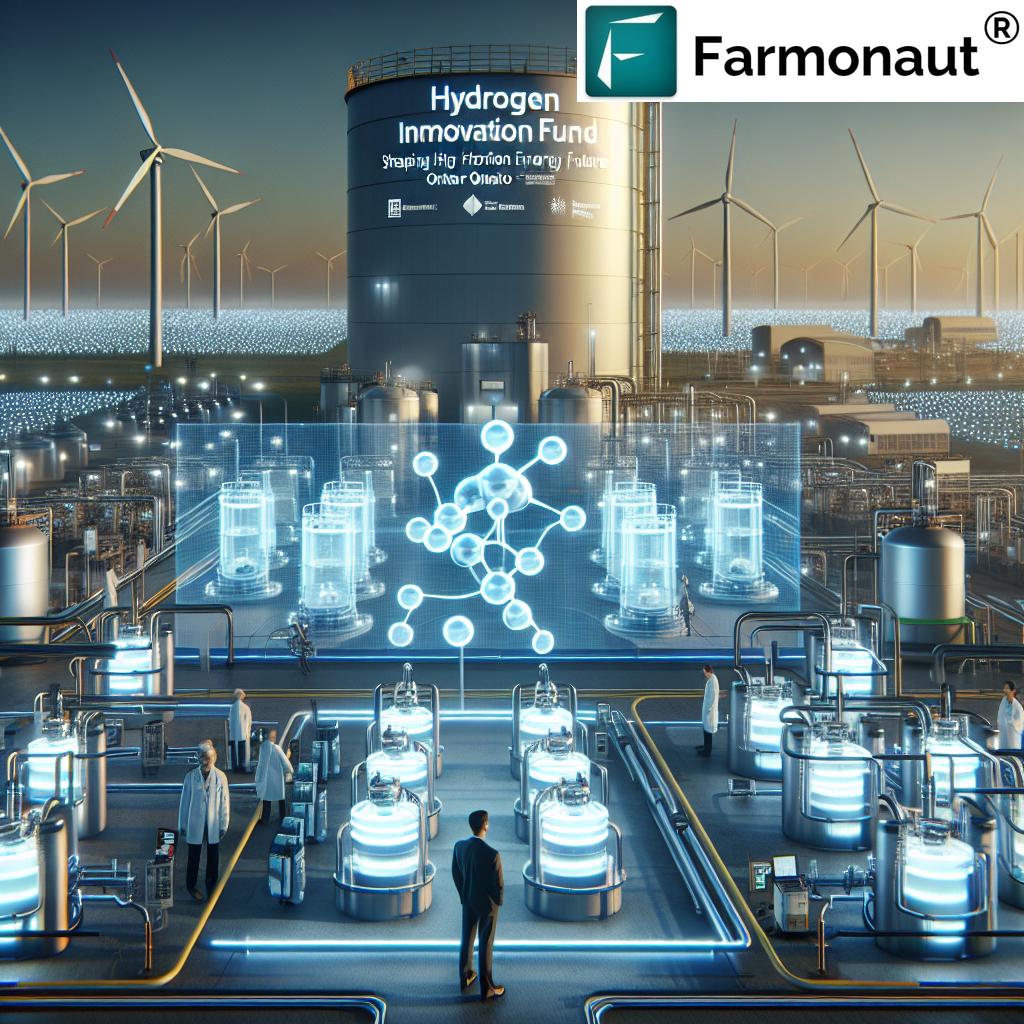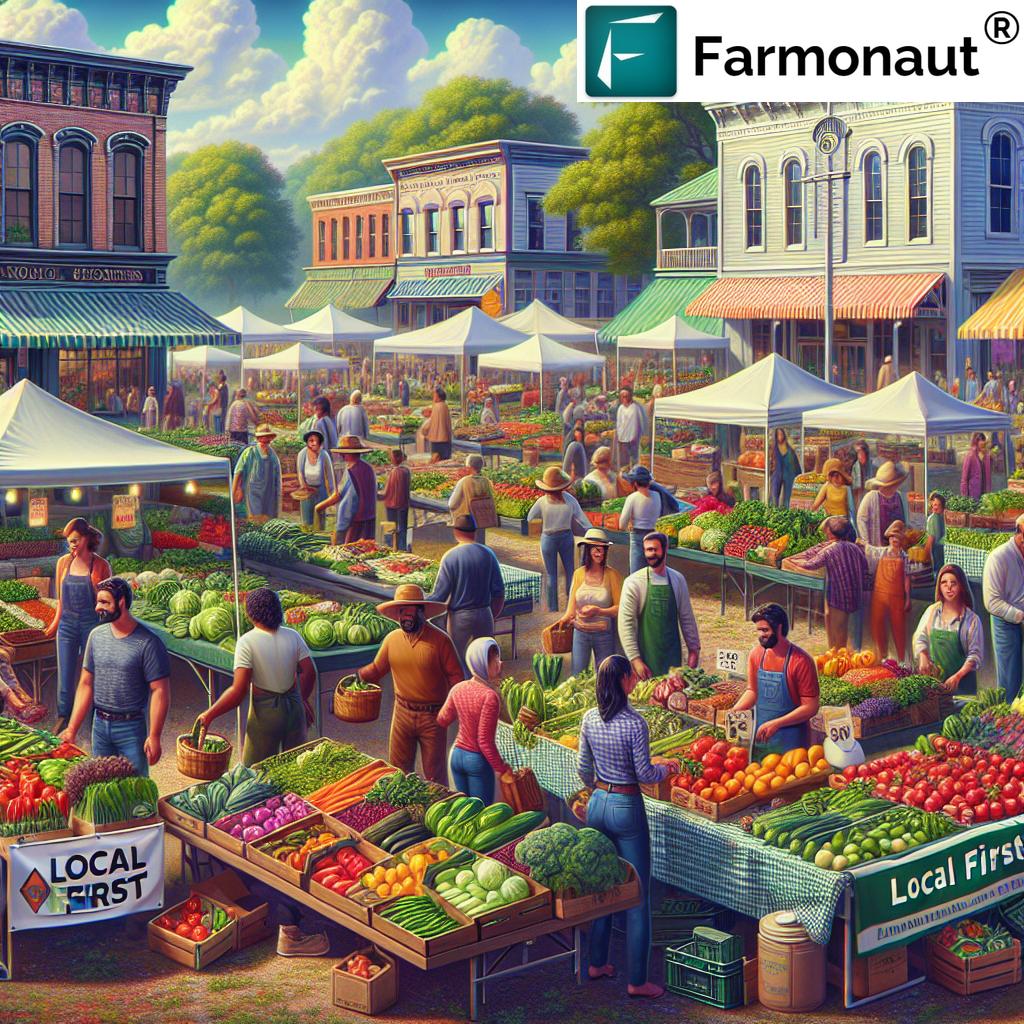Innovative Crop Protection Technologies: Boosting Ontario’s Greenhouse Vegetable Production and Sustainability
“Plant growth regulators in fruit orchards can potentially reduce labor time by up to 50% for peach and nectarine thinning.”
Welcome to our comprehensive exploration of the cutting-edge world of greenhouse vegetable production and crop protection technologies. As we delve into the heart of Ontario’s thriving agricultural sector, we’ll uncover the latest trends, innovative farming techniques, and sustainable agriculture practices that are revolutionizing the industry. Join us as we navigate through the challenges of climate risks, labor shortages, and the quest for increased productivity in the ever-evolving landscape of horticulture.
At Farmonaut, we’re committed to bringing you the most up-to-date information on agricultural advancements. Our satellite-based farm management solutions are designed to support growers in making data-driven decisions, optimizing crop health, and enhancing overall farm efficiency. As we explore the innovative crop protection technologies boosting Ontario’s greenhouse vegetable production, we’ll see how cutting-edge solutions like ours are playing a crucial role in shaping the future of agriculture.
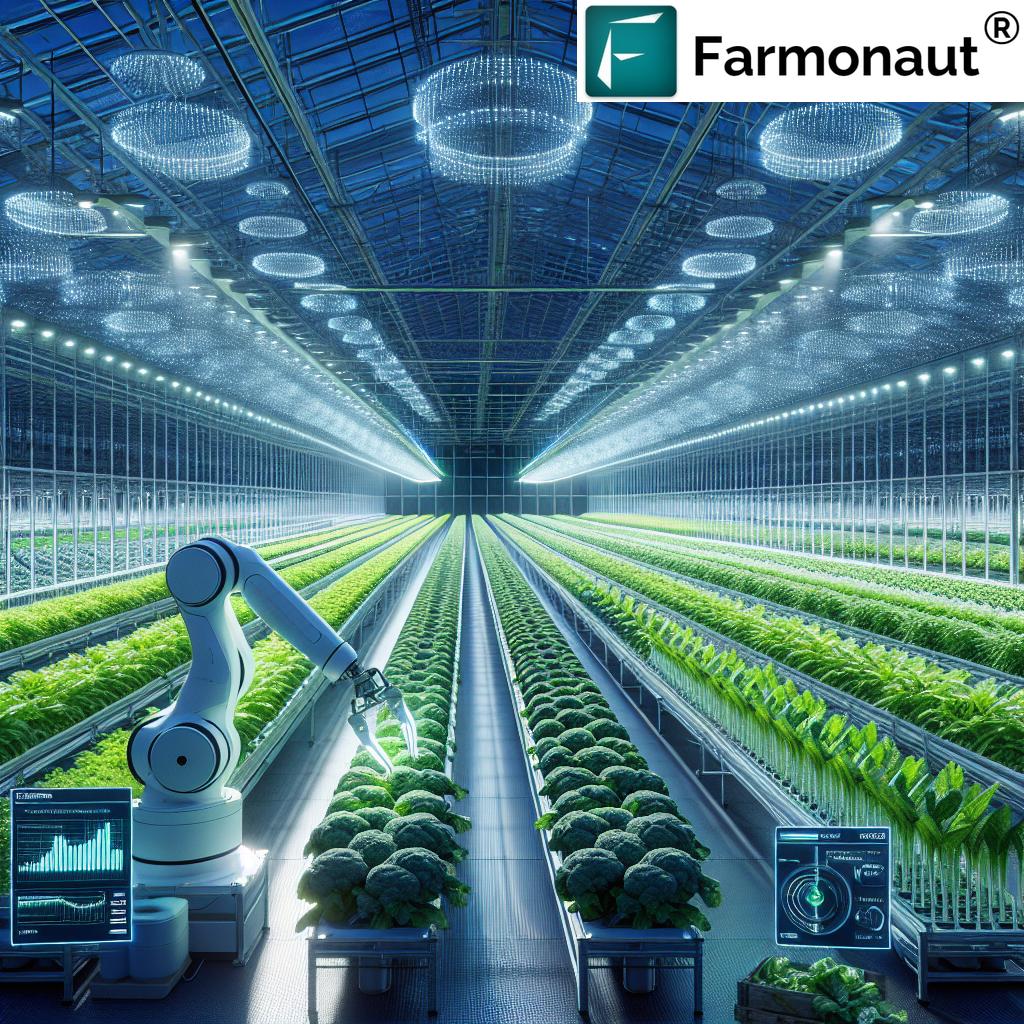
The Evolution of Greenhouse Vegetable Production in Ontario
Ontario’s greenhouse vegetable industry has undergone a remarkable transformation in recent years. As climate change presents new challenges, growers have been quick to adapt, implementing innovative technologies and sustainable practices to ensure the continued success of their operations. Let’s take a closer look at some of the key developments shaping the industry:
- Advanced Climate Control Systems: Modern greenhouses are equipped with sophisticated climate control technologies that allow for precise management of temperature, humidity, and CO2 levels. These systems help create optimal growing conditions year-round, regardless of external weather conditions.
- Water Conservation Techniques: With water scarcity becoming an increasing concern, many Ontario growers have adopted advanced irrigation systems and water recycling technologies to minimize water usage while maintaining crop health.
- Energy-Efficient Lighting: LED lighting systems are being widely implemented in greenhouses, providing plants with the specific light spectra they need for optimal growth while reducing energy consumption.
- Integrated Pest Management (IPM): Growers are moving away from heavy reliance on chemical pesticides, instead opting for biological control methods and strategic use of beneficial insects to manage pest populations.
These advancements have not only improved the sustainability of greenhouse operations but have also significantly boosted productivity and crop quality. As a result, Ontario’s greenhouse vegetable sector has become a leader in sustainable agriculture practices, setting an example for other regions to follow.
Cutting-Edge Crop Protection Technologies
The realm of crop protection has seen remarkable innovations in recent years, with new technologies emerging to address the unique challenges faced by greenhouse vegetable growers. Let’s explore some of the most promising developments:
1. Biological Crop Protection Methods
Biological crop protection methods are gaining traction as growers seek more sustainable alternatives to traditional chemical pesticides. These methods include:
- Beneficial Insects: Predatory insects like ladybugs and lacewings are introduced to control pest populations naturally.
- Microbial Pesticides: These are derived from naturally occurring microorganisms and offer targeted pest control with minimal environmental impact.
- Biopesticides: Plant-based compounds that repel or disrupt pest behavior, reducing crop damage without harming beneficial insects.
The adoption of these biological methods not only reduces the environmental footprint of greenhouse operations but also helps in maintaining the delicate ecological balance within the controlled environment.
2. Plant Growth Regulators
Plant growth regulators (PGRs) are innovative compounds that can influence various aspects of plant development. In greenhouse vegetable production, PGRs are being used to:
- Enhance fruit set and development
- Improve plant architecture for better light interception
- Regulate plant height and vigor
- Increase stress tolerance
Recent trials in fruit orchards have shown that PGRs can potentially reduce labor time by up to 50% for peach and nectarine thinning. This breakthrough has significant implications for greenhouse vegetable growers, who could see similar labor-saving benefits when applied to crops like tomatoes, peppers, and cucumbers.
3. Advanced Sensor Technologies
The integration of advanced sensor technologies in greenhouses has revolutionized the way growers monitor and manage their crops. These sensors provide real-time data on various parameters, including:
- Soil moisture levels
- Nutrient concentrations
- Plant stress indicators
- Pest and disease presence
By leveraging this data, growers can make informed decisions about irrigation, fertilization, and pest management, optimizing resource use and minimizing crop losses. At Farmonaut, our satellite-based crop health monitoring system complements these on-ground sensors, providing a comprehensive view of crop health and performance.
Explore our advanced satellite-based farm management solutions: Web App

Sustainable Agriculture Practices in Greenhouse Vegetable Production
Sustainability is at the forefront of modern greenhouse vegetable production, with growers implementing a range of practices to reduce their environmental impact while maintaining high productivity. Some key sustainable agriculture practices include:
- Circular Economy Approaches: Implementing systems to recycle and reuse water, nutrients, and organic waste within the greenhouse ecosystem.
- Energy-Efficient Technologies: Utilizing renewable energy sources like solar and geothermal, combined with energy-efficient lighting and climate control systems.
- Precision Agriculture: Employing data-driven approaches to optimize resource use and minimize waste.
- Biodiversity Enhancement: Creating pollinator-friendly environments around greenhouses to support local ecosystems.
These practices not only contribute to environmental conservation but also often result in cost savings and improved crop quality for growers.
Addressing Climate Risks in Agriculture
Climate change poses significant challenges to the agricultural sector, including greenhouse vegetable production. Ontario growers are taking proactive steps to mitigate these risks and build resilience into their operations. Some strategies include:
- Climate-Smart Infrastructure: Designing greenhouses to withstand extreme weather events and regulate internal conditions more effectively.
- Diverse Crop Selection: Cultivating a variety of crops with different climate tolerances to spread risk.
- Advanced Weather Monitoring: Utilizing sophisticated weather forecasting tools to anticipate and prepare for adverse conditions.
- Water Management Systems: Implementing rainwater harvesting and water storage solutions to buffer against drought periods.
By integrating these strategies, Ontario’s greenhouse vegetable industry is positioning itself to thrive in the face of changing climate patterns.
Innovations in Fruit Orchard Management
While our focus is primarily on greenhouse vegetable production, it’s worth noting the exciting developments in fruit orchard management that have potential applications in the greenhouse sector. Recent research into plant growth regulators for peach and nectarine thinning has shown promising results, with the potential to reduce labor time by up to 50%. This breakthrough could have significant implications for labor-intensive greenhouse crops like tomatoes and peppers.
Key innovations in fruit orchard management include:
- Precision Pruning Technologies: Automated systems that use AI and robotics to optimize tree structure and fruit production.
- Smart Irrigation Systems: Sensor-based irrigation that delivers water and nutrients precisely where and when plants need them.
- Frost Protection Innovations: Advanced frost fans and misting systems that protect delicate blossoms from late spring frosts.
These technologies are not only improving productivity in fruit orchards but are also inspiring new approaches to crop management in greenhouse environments.
“Ontario’s greenhouse vegetable industry is adapting to climate risks and labor challenges through innovative crop protection technologies.”
Extending Fresh Produce Shelf Life
One of the critical challenges in vegetable production is maintaining freshness and quality post-harvest. Recent advancements in this area are helping growers and retailers extend the shelf life of fresh produce, reducing waste and improving profitability. Some notable innovations include:
- Ethylene Inhibitors: These compounds slow down the ripening process in fruits and vegetables, particularly effective for crops like broccoli.
- Modified Atmosphere Packaging: Specialized packaging that regulates the gas composition around produce, slowing down degradation.
- Edible Coatings: Natural, edible films applied to produce that act as a barrier against moisture loss and oxidation.
These technologies not only benefit retailers and consumers but also allow growers to expand their market reach by extending the viable shipping distance of their products.
Agricultural Labor Efficiency and Management
Labor challenges continue to be a significant concern for the agricultural sector, including greenhouse vegetable production. Ontario growers are implementing various strategies to improve labor efficiency and manage workforce challenges:
- Automation and Robotics: Implementing automated systems for tasks like harvesting, packing, and climate control.
- Temporary Foreign Worker (TFW) Programs: Carefully managing TFW programs to ensure a reliable workforce during peak seasons.
- Training and Skill Development: Investing in employee training to improve productivity and reduce turnover.
- Ergonomic Work Environments: Designing workspaces to reduce physical strain and improve efficiency.
By addressing labor challenges head-on, Ontario’s greenhouse vegetable industry is ensuring its continued growth and success.
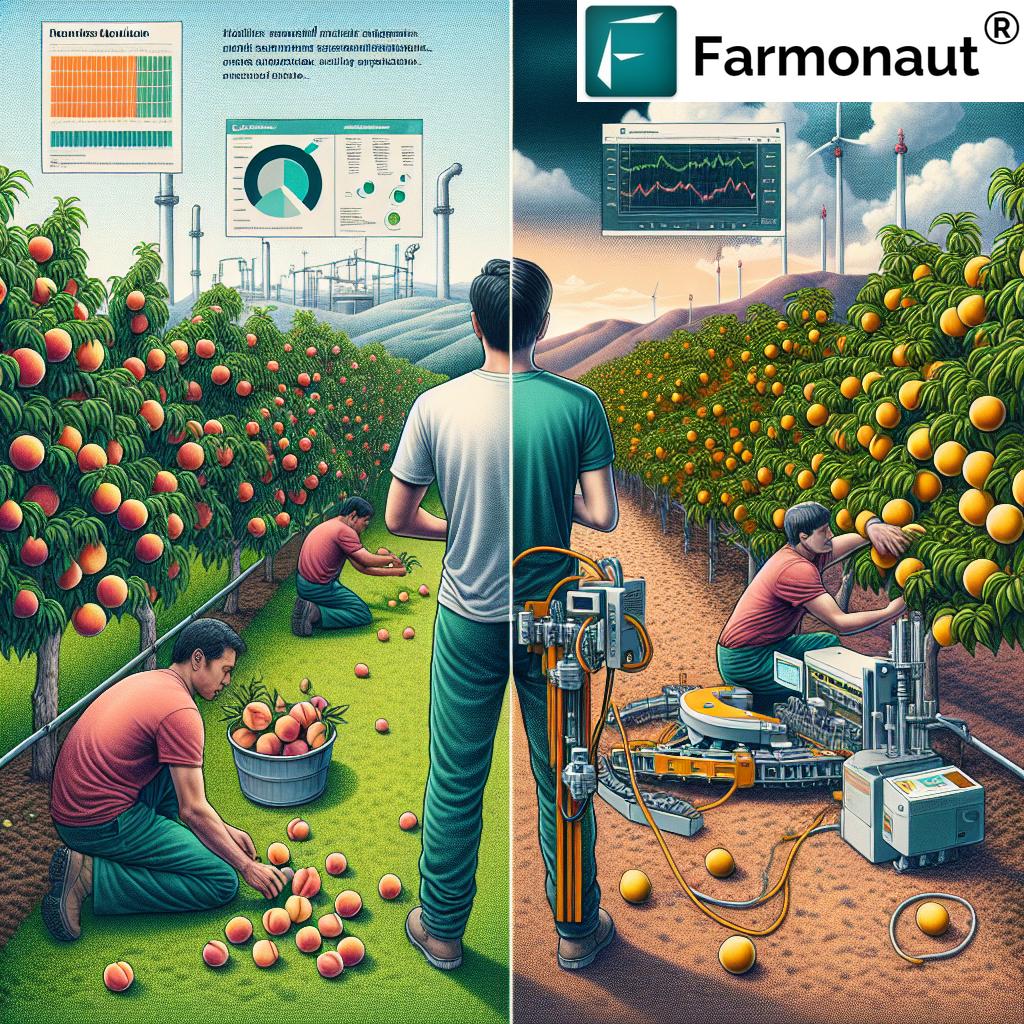
The Role of Technology in Modern Farming
Technology is playing an increasingly central role in modern farming, revolutionizing how we approach agriculture. From precision farming techniques to AI-driven decision support systems, the integration of technology is helping growers optimize their operations and achieve better results. At Farmonaut, we’re proud to be at the forefront of this technological revolution, offering cutting-edge solutions that empower farmers to make data-driven decisions.
Discover our API for seamless integration of satellite and weather data: Farmonaut API
Learn more about our API capabilities: API Developer Docs
Key technological advancements shaping modern farming include:
- Satellite Imagery and Remote Sensing: Providing real-time insights into crop health, soil moisture, and other critical factors.
- Internet of Things (IoT) Devices: Connecting various farm equipment and sensors to create a smart, responsive farming ecosystem.
- Artificial Intelligence and Machine Learning: Analyzing vast amounts of data to provide actionable insights and predictive analytics.
- Blockchain Technology: Enhancing traceability and transparency in the agricultural supply chain.
Comparative Analysis of Crop Protection Technologies
To provide a clear overview of the various crop protection technologies discussed, we’ve compiled a comparative analysis table. This table highlights the key features and benefits of each technology, helping growers make informed decisions about which solutions might best suit their needs.
| Technology Type | Target Crops | Estimated Labor Reduction | Sustainability Impact | Climate Resilience Factor |
|---|---|---|---|---|
| Plant Growth Regulators | Fruit trees, Greenhouse vegetables | Up to 50% for peach and nectarine thinning | Medium | High |
| Biological Crop Protection Methods | All greenhouse vegetables | 20-30% reduction in pesticide application time | High | Medium |
| Ethylene Inhibitors | Broccoli, Leafy greens | 10-15% reduction in post-harvest handling | Medium | Low |
| Advanced Greenhouse Systems | All greenhouse crops | 30-40% overall labor efficiency improvement | High | Very High |
This table provides a quick reference for growers considering the implementation of new crop protection technologies. It’s important to note that the actual benefits may vary depending on specific farm conditions and implementation strategies.
The Future of Greenhouse Vegetable Production
As we look to the future, the greenhouse vegetable production industry in Ontario is poised for continued growth and innovation. Several trends are likely to shape the sector in the coming years:
- Vertical Farming Integration: Combining traditional greenhouse methods with vertical farming techniques to maximize space utilization and productivity.
- AI-Driven Crop Management: Leveraging artificial intelligence to optimize every aspect of crop production, from climate control to harvest timing.
- Gene Editing Technologies: Developing crop varieties with enhanced resilience to pests, diseases, and environmental stresses.
- Circular Economy Models: Implementing closed-loop systems that minimize waste and maximize resource efficiency.
These advancements promise to further boost productivity, sustainability, and resilience in Ontario’s greenhouse vegetable sector.
Farmonaut’s Contribution to Agricultural Innovation
At Farmonaut, we’re committed to driving innovation in agriculture through our advanced satellite-based farm management solutions. Our platform offers a range of tools designed to support growers in making data-driven decisions and optimizing their operations:
- Real-time Crop Health Monitoring: Our satellite imagery analysis provides up-to-date information on crop health, allowing growers to quickly identify and address issues.
- AI-powered Advisory System: Our Jeevn AI system delivers personalized recommendations based on real-time data and expert knowledge.
- Weather Forecasting: Accurate, localized weather predictions help growers plan their activities and protect their crops from adverse conditions.
- Resource Management Tools: Our platform helps optimize the use of water, fertilizers, and other inputs, promoting sustainability and cost-efficiency.
By leveraging these tools, greenhouse vegetable growers can enhance their productivity, reduce risks, and contribute to more sustainable agriculture practices.
Download our mobile apps for on-the-go farm management:
Conclusion
The landscape of greenhouse vegetable production in Ontario is rapidly evolving, driven by innovative crop protection technologies, sustainable agriculture practices, and the need to address climate risks and labor challenges. From advanced biological control methods to cutting-edge plant growth regulators, the industry is embracing solutions that promise to boost productivity while reducing environmental impact.
As we’ve explored in this comprehensive overview, the integration of technology, sustainable practices, and data-driven decision-making is key to the continued success and growth of the sector. At Farmonaut, we’re proud to be part of this agricultural revolution, providing tools and insights that empower growers to navigate the complexities of modern farming.
The future of greenhouse vegetable production in Ontario looks bright, with ongoing innovations promising to further enhance efficiency, sustainability, and resilience. By staying informed about these advancements and leveraging cutting-edge solutions, growers can position themselves for success in an ever-changing agricultural landscape.
FAQ Section
Q1: What are the main challenges facing greenhouse vegetable production in Ontario?
A1: The main challenges include climate risks, labor shortages, resource management (water and energy), and maintaining competitiveness in a global market. Growers are also faced with the need to adopt sustainable practices while maintaining high productivity.
Q2: How are innovative crop protection technologies addressing these challenges?
A2: Innovative technologies such as biological crop protection methods, advanced sensor systems, and AI-driven management tools are helping growers optimize resource use, reduce labor requirements, and mitigate climate-related risks. These technologies also support more sustainable farming practices.
Q3: What role does Farmonaut play in supporting greenhouse vegetable growers?
A3: Farmonaut provides advanced satellite-based farm management solutions that offer real-time crop health monitoring, AI-powered advisory systems, and resource management tools. These solutions help growers make data-driven decisions, optimize their operations, and enhance overall farm productivity.
Q4: How can greenhouse vegetable growers improve their sustainability practices?
A4: Growers can improve sustainability by implementing circular economy approaches, adopting energy-efficient technologies, using precision agriculture techniques, and enhancing biodiversity around their operations. Utilizing tools like Farmonaut’s platform can also help in optimizing resource use and reducing waste.
Q5: What are some emerging trends in greenhouse vegetable production?
A5: Emerging trends include vertical farming integration, AI-driven crop management, gene editing for crop resilience, and the development of closed-loop systems for maximum resource efficiency. The industry is also seeing increased adoption of robotics and automation to address labor challenges.




